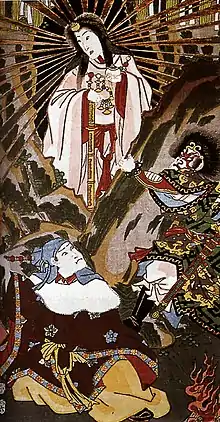| Heijō Shrine | |
|---|---|
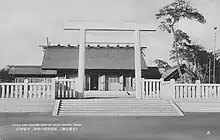 The shrine (date unknown) | |
| Religion | |
| Deity | Kunitama Okami Amaterasu Okami |
| Location | |
| Location | Pyongyang, Korea, Empire of Japan |
| Geographic coordinates | 39°02′07″N 125°45′19″E / 39.03534°N 125.7552°E |
| Architecture | |
| Completed | 1913 |
| Demolished | August 16, 1945 |
Heijō Shrine (Japanese: 平壌神社, Hepburn: Heijō jinja, Korean: 평양신사) was a Shinto shrine in Pyongyang, Korea during the Japanese colonial period. It was established in 1913[1] and destroyed in 1945.[2]
Its name derived from the Japanese name for Pyongyang during its occupation of Korea. The shrine's main annual festival was held on October 2. It was formerly a national shrine of the third rank (国幣小社, kokuhei-shōsha) in the Modern system of ranked Shinto Shrines.
The shrine was destroyed on August 16, 1945: just after Japan first announced its surrender in World War II. That day, local Koreans set fire to the shrine and destroyed it. Hundreds of similar cases arose throughout the peninsula in the following week.[2]
In modern times, the site is a park, with a statue of Kim Il Sung built at the site of the shrine's building.
Gallery
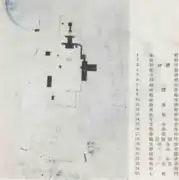 Map of layout of the shrine (1942)
Map of layout of the shrine (1942)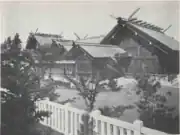 Side of the shrine (1942)
Side of the shrine (1942)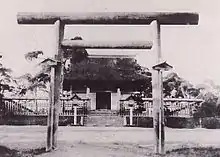 Another view of the shrine
Another view of the shrine
References
- ↑ "平壌神社 | 海外神社(跡地)に関するデータベース 神奈川大学非文字資料研究センター". www.himoji.jp. Retrieved 2023-10-09.
- 1 2 "神社참배 거부 18개교 日帝, 가차 없이 폐교|주간동아". 주간동아 (in Korean). Retrieved 2023-09-17.
External links

